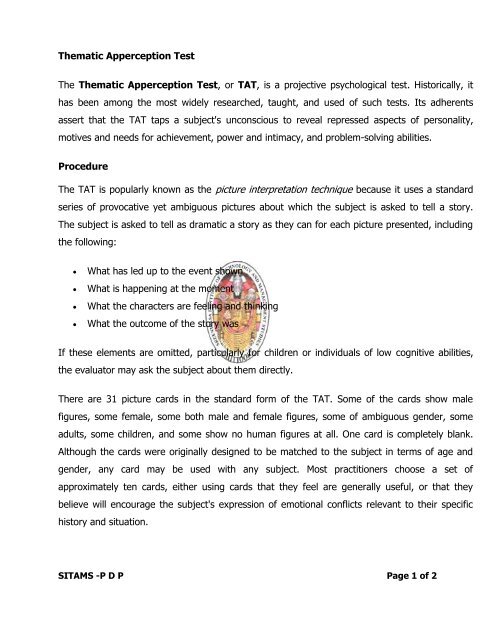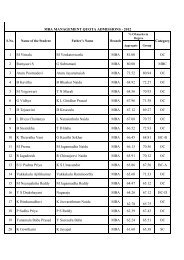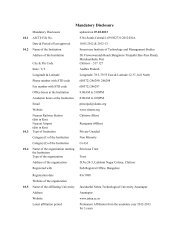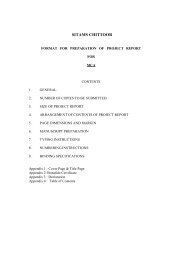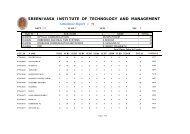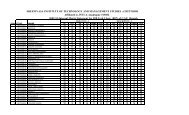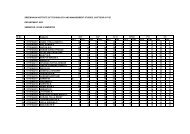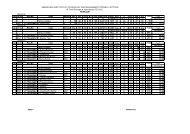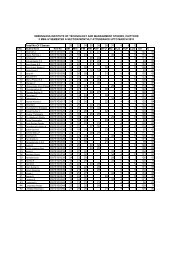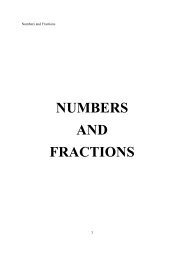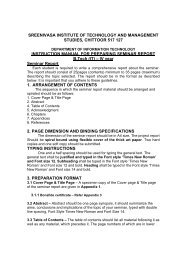Thematic Apperception Test The Thematic Apperception Test, or ...
Thematic Apperception Test The Thematic Apperception Test, or ...
Thematic Apperception Test The Thematic Apperception Test, or ...
Create successful ePaper yourself
Turn your PDF publications into a flip-book with our unique Google optimized e-Paper software.
<strong><strong>The</strong>matic</strong> <strong>Apperception</strong> <strong>Test</strong><strong>The</strong> <strong><strong>The</strong>matic</strong> <strong>Apperception</strong> <strong>Test</strong>, <strong>or</strong> TAT, is a projective psychological test. Hist<strong>or</strong>ically, ithas been among the most widely researched, taught, and used of such tests. Its adherentsassert that the TAT taps a subject's unconscious to reveal repressed aspects of personality,motives and needs f<strong>or</strong> achievement, power and intimacy, and problem-solving abilities.Procedure<strong>The</strong> TAT is popularly known as the picture interpretation technique because it uses a standardseries of provocative yet ambiguous pictures about which the subject is asked to tell a st<strong>or</strong>y.<strong>The</strong> subject is asked to tell as dramatic a st<strong>or</strong>y as they can f<strong>or</strong> each picture presented, includingthe following:What has led up to the event shownWhat is happening at the momentWhat the characters are feeling and thinkingWhat the outcome of the st<strong>or</strong>y wasIf these elements are omitted, particularly f<strong>or</strong> children <strong>or</strong> individuals of low cognitive abilities,the evaluat<strong>or</strong> may ask the subject about them directly.<strong>The</strong>re are 31 picture cards in the standard f<strong>or</strong>m of the TAT. Some of the cards show malefigures, some female, some both male and female figures, some of ambiguous gender, someadults, some children, and some show no human figures at all. One card is completely blank.Although the cards were <strong>or</strong>iginally designed to be matched to the subject in terms of age andgender, any card may be used with any subject. Most practitioners choose a set ofapproximately ten cards, either using cards that they feel are generally useful, <strong>or</strong> that theybelieve will encourage the subject's expression of emotional conflicts relevant to their specifichist<strong>or</strong>y and situation.SITAMS -P D P Page 1 of 2
In the TAT, the test subject (the boy shown here) examines a set of cards thatp<strong>or</strong>tray human figures in a variety of settings and situations, and is asked to tell ast<strong>or</strong>y about each card. <strong>The</strong> st<strong>or</strong>y includes the event shown in the picture, precedingevents, emotions and thoughts of those p<strong>or</strong>trayed, and the outcome of the eventshown. <strong>The</strong> st<strong>or</strong>y content and structure are thought to reveal the subject's attitudes,inner conflicts, and views.Sc<strong>or</strong>ing Systems<strong>The</strong> TAT is a projective test in that, like the R<strong>or</strong>schach test, its assessment of the subject isbased on what he <strong>or</strong> she projects onto the ambiguous images. <strong>The</strong>ref<strong>or</strong>e, to complete theassessment, each narrative created by a subject must be carefully rec<strong>or</strong>ded and analyzed touncover underlying needs, attitudes, and patterns of reaction. Although most clinicalpractitioners do not use f<strong>or</strong>mal sc<strong>or</strong>ing systems, several f<strong>or</strong>mal sc<strong>or</strong>ing systems have beendeveloped f<strong>or</strong> analyzing TAT st<strong>or</strong>ies systematically and consistently. Two common methods thatare currently used in research are the:Defense Mechanisms Manual DMM. [2] This assesses three defense mechanisms: denial(least mature), projection (intermediate), and identification (most mature). A person'sthoughts/feelings are projected in st<strong>or</strong>ies involved. Social Cognition and Object Relations SCOR [3] scale. This assesses four differentdimensions of object relations: Complexity of Representations of People, Affect-Tone ofRelationship Paradigms, Capacity f<strong>or</strong> Emotional Investment in Relationships and M<strong>or</strong>alStandards, and Understanding of Social Causality.SITAMS -P D P Page 2 of 2


